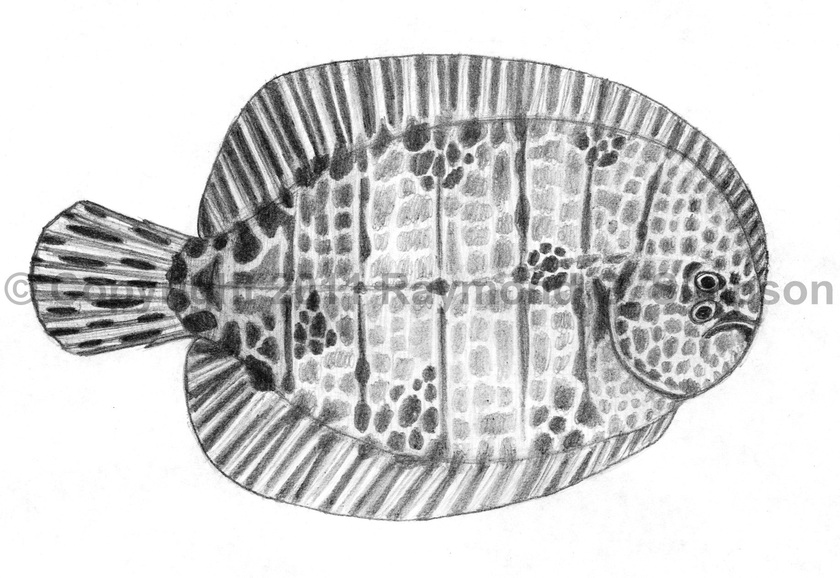
Common Name
Hogchoker
Year Described
Bloch & Schneider, 1801
Identification
Dorsal Fin: 50-56
Anal Fin: 36-42
Pectoral Fin: none (rarely rudimentary with 1 ray)
Pelvic Fin: 3 on ocular side, 4 on blind side (continuous with anal fin)
Deep and elliptical in body shape. Body and dorsal/anal fins with small ctenoid scales. Skin not loose. Mouth tiny and subterminal. Jaws with villiform teeth on blind side of jaws only. Eyes relatively large (1.8-2.5 times in snout length). Opercular opening very small, interbranchial foramen absent. Fimbriae present on mouth margin, blind side of head, anterior dorsal/anal fin rays, and in tufts over the ocular side of body.
Color
Body pale to dark brown with a variable pattern: ranging from uniform brown with up to 10 very thin crossbands, to heavily marked with numerous dark brown blotches and spots, and everything in between. Often 3-4 larger diffuse blotches on body near the dorsal and anal fin margins. Fins pale brown with dark streaks or blotches. Pale side pale, sometimes with freckles or blotches.
Size
Mature adults from 7cm SL. Maximum size to 20cm SL.
Habitat
Mud bottoms from 1-75m (usually much shallower). Often found in turbid estuaries and tidal creeks. Adults come into estuaries to spawn and juveniles live in areas of low salinity (sometimes almost freshwater). Non-spawning adults move into deeper waters offshore but can also be found in shallow coastal waters.
Range
Continental from the Gulf of Maine to Panama, including the Gulf of Mexico.
References
McEachran, J.D. and J.D. Fechhelm. 2005. Fishes of the Gulf of Mexico. Volume 2: Scorpaeniformes to Tetraodontiformes. University of Texas Press, Austin. i-viii +1-1004.
Munroe, T.A. 2002. Achiridae (pp 1925-1933). In: Carpenter. 2002. The living marine resources of the Western Central Atlantic. Vol. 3: Bony fishes part 2 (Opistognathidae to Molidae), sea turtles and sea mammals. FAO Species Identification Guides for Fisheries Purposes. American Society of Ichthyologists and Herpetologists Special Publication No. 5.